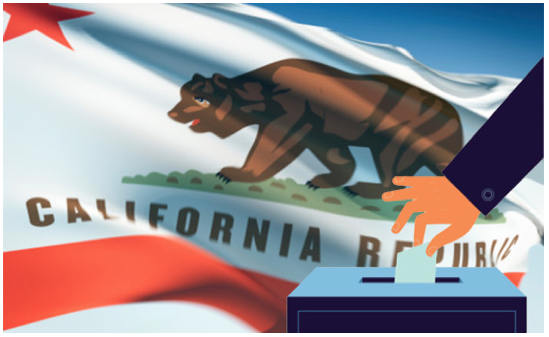CommentsCAL MATTERS COMMENTARY-With 2018 just days away, we pretty much know who will be running for which major California offices next year – except for the intentions of billionaire environmentalist Tom Steyer, who’s making all the moves, but remains coy about what, if anything, he’ll do.
The biggest uncertainty is that we don’t know what initiative measures will also make it to the ballot, but it’s likely to be a potpourri of special interest gambits, ideological symbolism and serious governance proposals.
Originally created 105 years ago as a check on corrupt or inattentive legislative bodies – the Southern Pacific Railroad virtually owned the state Legislature at the time – the initiative was used sparingly until suddenly morphing into a powerful political tool and a lucrative industry for professional signature-gatherers, fundraisers and campaign consultants.
Since 1912, according to a compilation by the Secretary of State’s office, just under 2,000 initiatives have been cleared for signature gathering, but until the mid-1970s, with few exceptions, there were just a handful each year.
The number exploded to 33 in 1974; since then it’s never dropped below 16 and has been as high as 109 in 2005.
However, through 2016, just 376 of 1,952 proposed measures qualified for the ballot and voters passed scarcely a third of those – 132.
That seemingly low number doesn’t tell the whole story of how the initiative process has impacted the state.
Much of the state budget, for example, is driven by two successful initiatives, the iconic Proposition 13 property tax limit in 1978 and the Proposition 98 school finance law a decade later.
As secretary of state in 1974, Jerry Brown exploited the Watergate scandal and sponsored a ballot measure to regulate lobbyists and campaign spending as his platform for winning his first term as governor. Since returning to the governorship in 2011, Brown has sponsored two successful initiatives, one increasing taxes and another softening state criminal sentencing laws.
In 1990, Pete Wilson rode a legislative term limit measure into the governorship and four years later championed another, cutting benefits to undocumented immigrants, to win a second term.
Arnold Schwarzenegger’s governorship went into the dumps when he tried, and failed, to win voter approval for an array of governmental reform measures in 2005.
The leading candidate for governor next year, Lt. Gov. Gavin Newsom, elevated his image by sponsoring measures to crack down on gun ownership and legalize marijuana in 2016.
Both Republican candidates for governor are sponsoring 2018 measures, John Cox’s to increase the size of the Legislature and change how it is elected, and Travis Allen’s to repeal California’s recent increase in fuel taxes.
On another level, interest groups often propose ballot measures not so much to get them passed, but to bring pressure on politicians to act, such as a workers’ compensation overhaul threatened by employers in 2004 that Schwarzenegger used to bulldoze reform through the Legislature.
On an even deeper level, initiatives are sometimes used as weapons in private disputes. A major health care union, SEIU-UHW, has frequently filed initiatives, such as one to curb hospital executive salaries, to impact labor negotiations. Currently, the union has proposed several local and state initiatives in the same vein, such as one aimed at dialysis clinics.
The latter is one of 37 potential 2018 initiatives that have been cleared for signature gathering, and several others are in the works, including one to remove Proposition 13’s property tax limits on commercial property.
How many and which ones make it to the November ballot are as uncertain as Tom Steyer’s intentions.
(Dan Walters has been a journalist for nearly 57 years, spending all but a few of those years working for California newspapers. He has written more than 9,000 columns about California and its politics. This Walters perspective originated at CalMatters a nonpartisan, nonprofit journalism venture committed to explaining how California’s state Capitol works and why it matters.) Prepped for CityWatch by Linda Abrams.
-cw
















